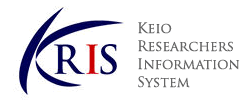-
Affiliation
-
School of Medicine, Department of Internal Medicine (Neurology) Department of Neurology, Keio University School of Medicine (Shinanomachi)
-
Position
-
Professor
-
Related Websites
-
External Links

KEIO RESEARCHERS INFORMATION SYSTEM |
Details of a Researcher
このページはJavascriptを使用しています。すべての機能を使用するためにはJavascript を有効にする必要があります。
NAKAHARA Jin
|
|
|
- Japanese Society of Neurology: Delegate
- Japanese Society of Internal Medicine: Councilor
- Japanese Society of Neuroimmunology: Director
- Japanese Society of Neurological Therapeutics: Councilor
- Japanese Society for Neuroinfectious Diseases: Councilor
- Japan Multiple Sclerosis Network: Director
- Japanese Society of Microcirculation: Director
- Pan-Asian Congress for Treatment and Research in Multiple Sclerosis (PACTRIMS): Executive committee member
- American Academy of Neurology (AAN): FAAN
- European Academy of Neurology (EAN): Corresponding Member
We aim to develop actual therapeutics by every conceivable means – from advancement of translational research to home care medicine – to improve the quality of life of patients suffering from various neurological diseases.
Guest Professor, Kanazawa University
Guest Professor, The JIKEI University School of Medicine
Director, iPS Cell Research Center for Intractable Neurological Diseases, Keio University (KiND)
Director, Keio University Hospital Parkinson's Disease Center
Keio University Hospital Stroke Center
COE Researcher, Keio University
JSPS Researcher (DC1), JSPS
JSPS Researcher (PD), JSPS
Project Assistant Professor, Keio University
Instructor, Keio University
Keio University, School of Medicine
University, Graduated
Keio University, Graduate School, Division of Medicine, 生理系専攻
Graduate School, Completed, Doctoral course
Medical license, 2003.05
Certified occupational physician, 2011.09
Board certified member of the Japanese Society of Internal Medicine, 2013.09
Board certified neurologist, 2014.07
Fellow of the Japanese Society of Internal Medicine (FJSIM), 2019.12
Oligodendrocyte
Multiple sclerosis
Neuroimmunology
Neurology
Neuromyelitis optica spectrum disorder
神経治療学の拠点形成,
多発性硬化症の臨床研究,
中枢神経系髄鞘再生療法の開発,
Visualization of Myelin for the Diagnosis and Treatment Monitoring of Multiple Sclerosis
Nakahara J., Advances in Experimental Medicine and Biology, 2019
Kubota M., Bun S., Takahata K., Kurose S., Momota Y., Iwabuchi Y., Tezuka T., Tabuchi H., Seki M., Yamamoto Y., Shikimoto R., Mimura Y., Hoshino T., Shimohama S., Suzuki N., Morimoto A., Oosumi A., Hoshino Y., Tai K., Aoyagi H., Sato Y., Kuromitsu J., Nakahara J., Mimura M., Ito D.
Alzheimer S Research and Therapy 17 ( 1 ) 2025.12
Effect of lacosamide on cortical spreading depolarization in mice
Iba C., Unekawa M., Ihara K., Izawa Y., Nakahara J., Takizawa T.
Journal of Headache and Pain 26 ( 1 ) 2025.12
ISSN 11292369
Takahashi K., Nakahara J., Miura Y., Ae R., Nakamichi K., Harada M., Mori K., Sanjo N., Yukitake M., Yokote H., Hamaguchi T., Yamada M., Takao M.
Neurology Neuroimmunology and Neuroinflammation 12 ( 6 ) 2025.11
Tezuka T., Daida K., Nakajima S., Konishi M., Nihei Y., Funayama M., Billingsley K.J., Blauwendraat C., Hattori N., Uchida H., Nakahara J., Seki M.
Internal Medicine 64 ( 21 ) 3155 - 3157 2025.11
ISSN 09182918
Oshima K., Ihara K., Watanabe N., Takemura R., Ishizuchi K., Takahashi N., Shibata M., Nakahara J., Takizawa T.
Internal Medicine 64 ( 14 ) 2114 - 2123 2025.07
ISSN 09182918
Imaging analysis of myelin pathologies in multiple sclerosis using q-Space myelin map method
Nakahara, Jin
科学研究費補助金研究成果報告書 2022
International collaborative study on novel MRI modality "Myelin map"
Nakahara, Jin
福澤諭吉記念慶應義塾学事振興基金事業報告集 (福澤基金運営委員会) 2020
Platform development for neuro-immunological therapeutics in the Asian region.
Nakahara, Jin
学事振興資金研究成果実績報告書 (慶應義塾大学) 2019
Novel therapeutic strategy against ischemic stroke based on glial cell interaction by ketone bodies
Nakahara, Jin
科学研究費補助金研究成果報告書 2017
Tokuyasu D., Imai S., Chen S.P., Ihara K., Watanabe N., Izawa Y., Nakahara J., Hori S., Takizawa T.
BMC Neurology 25 ( 1 ) 2025.12
Okusa S., Tezuka T., Kosugi K., Yamamoto Y., Takahata K., Higuchi M., Akiyama T., Kobayashi M., Toda M., Ito D., Nakahara J., Seki M.
Journal of Movement Disorders 18 ( 3 ) 268 - 270 2025.07
ISSN 2005940X
Nukariya T., Tezuka T., Okusa S., Okochi R., Sakai Y., Nihei Y., Nakahara J., Seki M.
Journal of Movement Disorders 18 ( 2 ) 179 - 181 2025.04
ISSN 2005940X
Tezuka T., Miya F., Okusa S., Funayama M., Hattori N., Kosaki K., Nakahara J., Seki M.
Movement Disorders Clinical Practice 2025
Tezuka T., Nukariya T., Kizuka Y., Okusa S., Okochi R., Sakai Y., Nihei Y., Nakahara J., Seki M.
Journal of Movement Disorders 17 ( 4 ) 453 - 455 2024.10
ISSN 2005940X
Precision medicine research for neuromyelitis optica-spectrum disorders
基盤研究(B), Principal investigator
ミエリンマップ法を用いた多発性硬化症における髄鞘病理の画像解析
MEXT,JSPS, Grant-in-Aid for Scientific Research, Grant-in-Aid for Scientific Research (C), Principal investigator
髄鞘を標的とした神経変性疾患・脊髄損傷に対する新規治療戦略に関する研究
文部科学省, Grant-in-Aid for Scientific Research, Principal investigator
髄鞘の可視化技術による多発性硬化症の病型分類に関する研究
文部科学省, Grant-in-Aid for Scientific Research, Principal investigator
アストロサイトによるin vivoケトン体生合成機構の解明
文部科学省, Grant-in-Aid for Scientific Research, Principal investigator
Drug delivery system toward demyelinating lesion and biochemical marker of demyelinating lesions
Date applied: 8252540 2012.08
Date issued: 8252540 2012.08
Patent, Joint
Medicinal compositions containing Fc receptor γ chain activator
Date applied: 7901678 2011.03
Date issued: 7901678 2011.03
Patent, Joint
Fc受容体γ鎖活性化物質を含有する医薬組成物
Date applied: 4214249 2008.11
Date issued: 4214249 2008.11
Patent, Joint
Best Presentation Award
2017, Sendai Conference
MSJ-PACTRIMS investigator award
2014, Pan-Asian Committee for Treatment and Research in Multiple Sclerosis (PACTRIMS)
優秀指導教官賞
2014, 日本内科学会
MSJ-PACTRIMS Investigator Award
2014, PACTRIMS
優秀指導教官賞
2014, 内科学サミット2014
LECTURE SERIES, INTERNAL MEDICINE (NEUROLOGY)
2025
INTERNAL MEDICINE: SEMINAR
2025
INTERNAL MEDICINE: PRACTICE
2025
INTERNAL MEDICINE
2025
CLINICAL CLERKSHIP IN NEUROLOGY
2025
日本内科学会
日本神経学会
日本神経免疫学会
日本神経治療学会
日本脳卒中学会